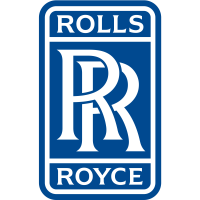Company Analysis Rolls-Royce Holdings plc
1. Summary
Advantages
- The stock's return over the last year (83.12%) is higher than the sector average (-18.86%).
Disadvantages
- Price (7.05 $) is higher than fair price (3.84 $)
- Dividends (0%) are below the sector average (11.59%).
- Current debt level 13.89% has increased over 5 years from 11.38%.
- The company's current efficiency (ROE=-65.53%) is lower than the sector average (ROE=13.68%)
Similar companies
2. Share price and performance
2.1. Share price
2.2. News
18 november 19:42 Rolls-Royce secures funding to develop lunar nuclear reactor
18 november 17:16 Emirates buys 15 Airbus jets in reprieve from engine row
2.3. Market efficiency
| Rolls-Royce Holdings plc | Industrials | Index | |
|---|---|---|---|
| 7 days | 0.1% | -1% | -2.5% |
| 90 days | -0.4% | -9.5% | -0.5% |
| 1 year | 83.1% | -18.9% | 22.5% |
RYCEY vs Sector: Rolls-Royce Holdings plc has outperformed the "Industrials" sector by 101.98% over the past year.
RYCEY vs Market: Rolls-Royce Holdings plc has outperformed the market by 60.59% over the past year.
Stable price: RYCEY is not significantly more volatile than the rest of the market on "OTC" over the last 3 months, with typical variations of +/- 5% per week.
Long period: RYCEY with weekly volatility of 1.6% over the past year.
3. Summary of the report
4. Fundamental Analysis
4.1. Stock price and price forecast
Above fair price: The current price (7.05 $) is higher than the fair price (3.84 $).
Price is higher than fair: The current price (7.05 $) is 45.5% higher than the fair price.
4.2. P/E
P/E vs Sector: The company's P/E (10.46) is lower than that of the sector as a whole (42.78).
P/E vs Market: The company's P/E (10.46) is lower than that of the market as a whole (46.66).
4.2.1 P/E Similar companies
4.3. P/BV
P/BV vs Sector: The company's P/BV (-9.81) is lower than that of the sector as a whole (4.08).
P/BV vs Market: The company's P/BV (-9.81) is lower than that of the market as a whole (-9.04).
4.4. P/S
P/S vs Sector: The company's P/S indicator (1.53) is lower than that of the sector as a whole (3.21).
P/S vs Market: The company's P/S indicator (1.53) is lower than that of the market as a whole (4.84).
4.4.1 P/S Similar companies
4.5. EV/Ebitda
EV/Ebitda vs Sector: The company's EV/Ebitda (7.39) is lower than that of the sector as a whole (123.03).
EV/Ebitda vs Market: The company's EV/Ebitda (7.39) is lower than that of the market as a whole (25.09).
5. Profitability
5.1. Profitability and revenue
5.2. Earnings per share - EPS
5.3. Past profitability Net Income
Yield Trend: Negative and has fallen by -35.22% over the last 5 years.
Accelerating profitability: The return for the last year (0%) exceeds the average return for 5 years (-35.22%).
Profitability vs Sector: The return for the last year (0%) exceeds the return for the sector (-48.47%).
5.4. ROE
ROE vs Sector: The company's ROE (-65.53%) is lower than that of the sector as a whole (13.68%).
ROE vs Market: The company's ROE (-65.53%) is lower than that of the market as a whole (-8.19%).
5.5. ROA
ROA vs Sector: The company's ROA (7.65%) is higher than that of the sector as a whole (5.05%).
ROA vs Market: The company's ROA (7.65%) is higher than that of the market as a whole (4.87%).
5.6. ROIC
ROIC vs Sector: The company's ROIC (0%) is lower than that of the sector as a whole (10.31%).
ROIC vs Market: The company's ROIC (0%) is lower than that of the market as a whole (11.03%).
7. Dividends
7.1. Dividend yield vs Market
Low yield: The dividend yield of the company 0% is below the average for the sector '11.59%.
7.2. Stability and increase in payments
Unstable dividends: The company's dividend yield 0% has not been consistently paid over the past 7 years, DSI=0.64.
Weak dividend growth: The company's dividend yield 0% has been growing weakly or stagnant over the past 5 years. Growth over only 2 years.
7.3. Payout percentage
Dividend Coverage: Current payments from income (0.0415%) are at an uncomfortable level.
Pay for your subscription
More functionality and data for company and portfolio analysis is available by subscription




